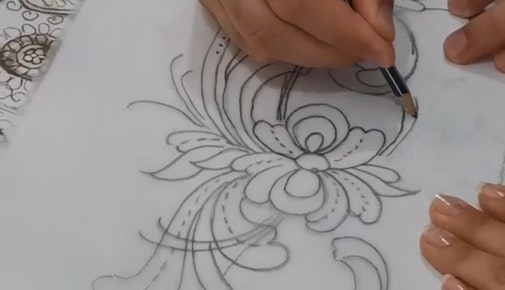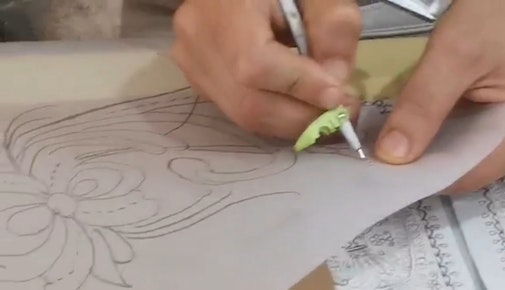Ceacht: Teicníc oidhreachta a fhoghlaim
- Arna réiteach ag
- Asociatia Perseidele
- Údair
- Carmen, Victoria Ghilas, Maria Sârbu,
Is féidir an cur chuige oibre seo a chur in oiriúint d’aon chomhthéacs inarb é is aidhm dó teicnící ceardaíochta a fhoghlaim chun aithris a dhéanamh ar earra oidhreachta trí mheán na healaíne. Sa chás seo, is í an phéintéireacht an réimse ealaíne atá faoi chaibidil. Is fiú dul i gcomhar le saineolaí oidhreachta chun eolas a chur ar na teicnící saibhre go léir a bhaineann leis an cheardaíocht thraidisiúnta.
Ainm an cheachta: Teicníc oidhreachta a fhoghlaim (Maisiú traidisiúnta a phéinteáil).
Modh oibre: Péintéireacht, turgnamh.
Réimse oidhreachta: Teicniúil.
Aidhm agus spriocanna an cheachta: Teicníc oibre a fhoghlaim agus scileanna praiticiúla a fhorbairt.
Cén fáth/Conas a spreagann an ceacht seo foghlaim bhunathraitheach: Déanfaidh na rannpháirtithe maisiú traidisiúnta a phéinteáil. Cuirfidh siad an méid a d’fhoghlaim siad ó na healaíontóirí i bhfeidhm.
An líon idéalach rannpháirtithe: 4–5 rannpháirtí sa ghrúpa, is féidir le roinnt grúpaí a bheith ag obair ag an am chéanna faoi threoir 2–3 ealaíontóirí.
Fad: 1–2 uair an chloig.
Ábhair atá de dhíth: Píosaí adhmaid, péinteanna, uisce, scuaba, stionsail, patrúin atá priontáilte ar pháipéar, rianpháipéar, púdar tailc.
Cur síos céim ar chéim ar an cheacht: Déanfaidh na rannpháirtithe maisiú Sacsanach a phéinteáil. Roghnóidh na healaíontóirí roinnt maisithe óna mbunachar sonraí agus beidh siad sin priontáilte, go daite, ar pháipéar. Déanfar aithris ar chúpla dearadh simplí ar dtús, ó tharla gur tosaitheoirí iad na rannpháirtithe. Gheobhaidh gach duine cóip den phatrún réamhdhéanta. Is féidir teimpléad a chruthú ach an patrún a tharraingt ar rianpháipéar. Scaiptear sraith thanaí de phúdar tailc ansin ar an phíosa adhmaid chun cruth an teimpléid a chóipeáil. Nuair a bheidh an imlíne bunaithe, péinteálfaidh gach duine an maisiú de réir dhathanna an phatrúin. Measctar na péinteanna go maith. Cuidíonn an t-ealaíontóir leis na rannpháirtithe nuair a bhíonn deacrachtaí acu.
Príomhcheisteanna eile: Meastar gur gníomhaíocht ó thaithí é seo, ós rud é go mbeidh na rannpháirtithe ag péinteáil den chéad uair.
Leideanna don oide: Ba cheart do na rannpháirtithe an ceacht a dhéanamh arís agus arís eile, ag baint úsáide as dearadh difriúil gach uair. Is inmholta an rud é móitífeanna a mhalartú: bláthach, zómorfach, geoiméadrach.





